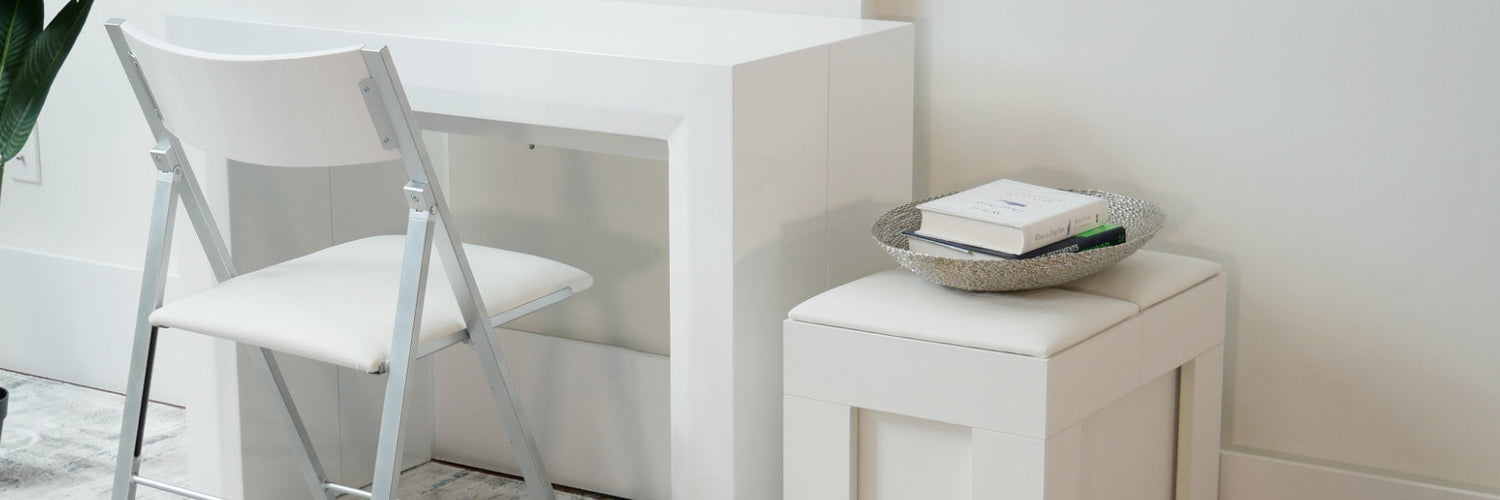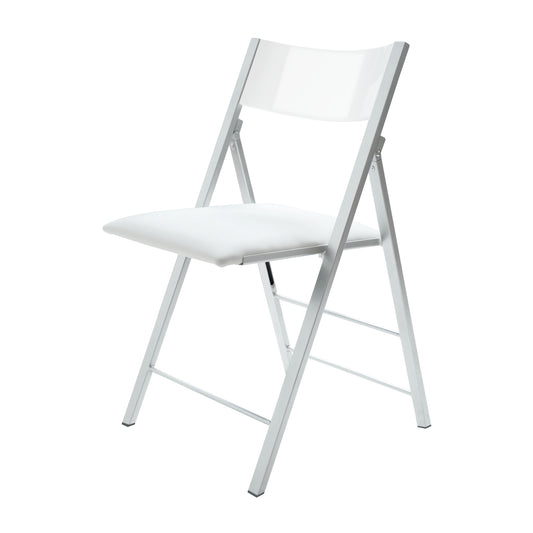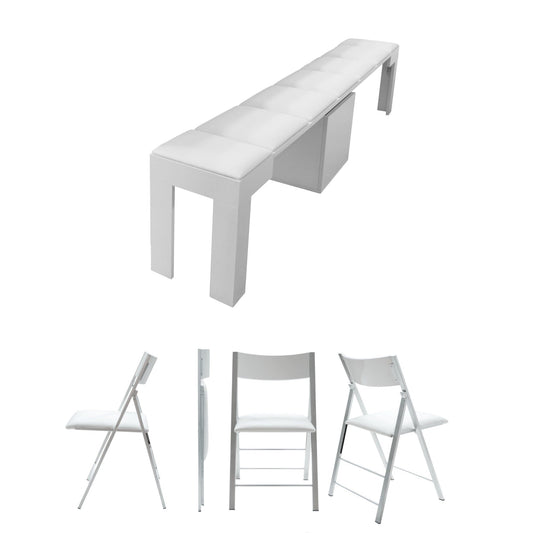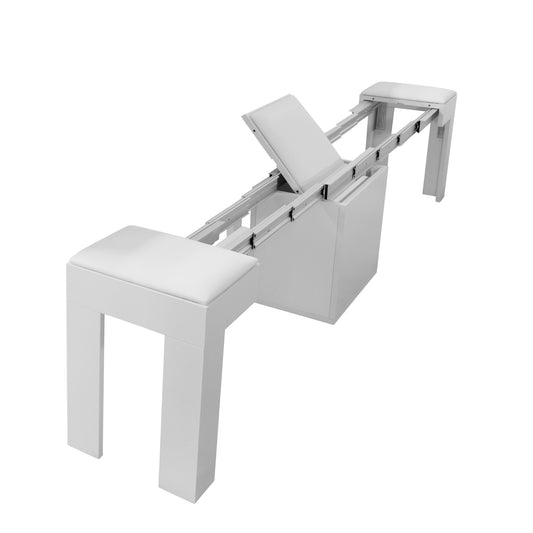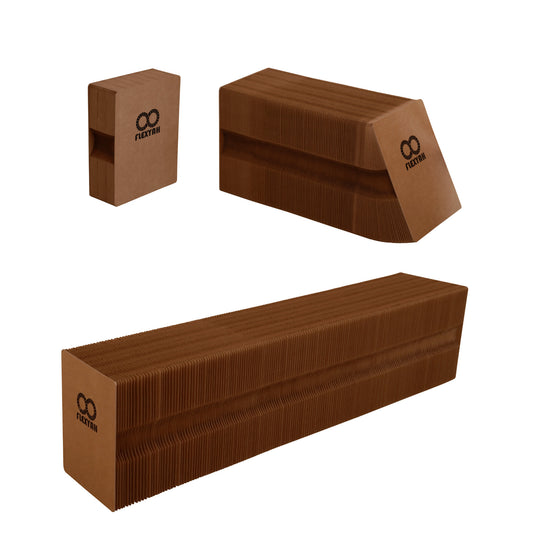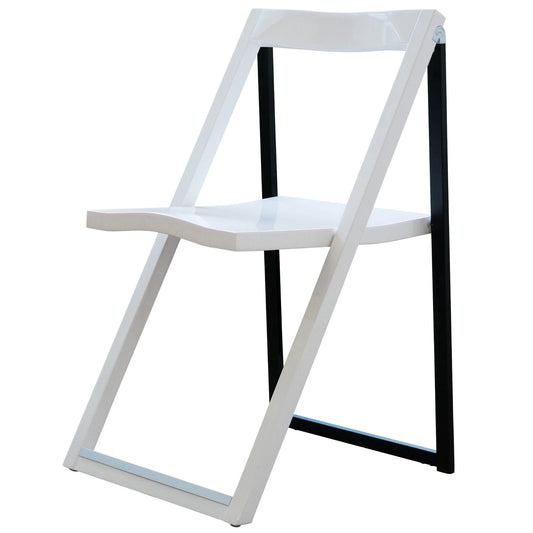The four Gestalt principles of similarity, proximity, continuity, and closure are based on how people see and process the world around them, and can be applied to interior design to customize how your space is experienced. The brain tends to try to create order out of the world around you, and the Gestalt grouping principles are part of its program.
Fun fact: Gestalt is a German word meaning unified whole, where the whole is made up of many different parts that together create something more or different from the parts themselves.
It’s like how each room in your home is defined by the furniture and decorations you use. By themselves, they’re just a couch or TV, but put together, you have created a living room (a whole greater than its parts).
This type of design thinking starts with how you perceive a space. Applying these principles is not just limited to the eyes, as the four principles can also be applied to the textures you use in a room for guests to feel and the paths you create with your furniture.
- Similarity is how the brain naturally groups objects based on how similar they appear, creating recognizable patterns based on a common color, shape, size, texture or a combination of vision and touch. This principle is easily noticeable during major holidays, when you automatically know which aisle has the holiday merchandise because all the items will have a similar color scheme at a glance.
- Proximity is when items or furniture are grouped based on how close they are to each other. Close items will seem more related compared to those farther away. Like the chairs in the dining room are grouped with the dining room table, but the chairs in the living room are not.
- Continuity is grouping objects that all follow a similar path or direction, creating continuous lines in the space. The rows of bookshelves seen in libraries are not just an example of similarity and proximity, but also continuity. Even though there are spaces between the rows of shelves, we still perceive them as a whole, forming a continuous line that runs through the building and directs us on where to go. You know if you start at one end and follow the shelves, you’ll get further along the alphabet, creating continuity.
- Closure is the ability to see incomplete shapes or images as complete by combining them together or looking at the space between them. If you place 4 chairs facing each other with 2 on each side, your brain creates closure when it tells you they have formed a square.
Gestalt Principle of Similarity
The Gestalt principle of similarity can be applied to interior design by approaching rooms with a “theme.” The ocean as a theme could be hints of blue in everything from the walls to the furniture with seashell sculptures on shelves and seashell filled vases to match. This creates a cohesive look. In the living room, matching the fabric texture or color of your couch with your curtains also uses the principle of similarity to bring the room together.
Similarity is one of the easiest ways to use design thinking to create vignettes in your home, as common color and shape can override proximity in how your brain groups objects together. To create a pop of color and incorporate biophilia, a vase with bright red roses on your coffee table paired with some red books or coasters attracts attention and appears organized due to their similar color scheme.
Gestalt principle of Proximity
The Gestalt principle of proximity, applied to interior design, suggests placing items or furniture close together based on function rather than appearance. Based on proximity, a tool found in the kitchen would more likely be related to food compared to one found in a garage.
In a dining room, the similarity of the smooth wood grain of the chairs and table in a dining set, and whether the chairs are physically close to the table, utilizes Gestalt principles to group them as a set.
A small table placed on the side of the couch, if moved into a bedroom next to the bed, becomes the nightstand. Based on its proximity to the bed, it is redefined as part of the bedroom vs. being an accent table in a family room or game room.
Gestalt principle of Continuity
The Gestalt principle of continuity in interior design should make you think of how the objects or furniture should flow in a room and how you would like people to move throughout the space. When items create an invisible line they direct the eye and influence how people move through a space. These are called leading lines.
Hanging your pictures on the wall with the top of each frame a consistent distance from the ceiling creates a horizontal line that can be followed from wall to wall across gaps and doorways.
Changing the theme of the pictures or rearranging their placement on the wall can help differentiate different areas of a home with an open floor plan by disrupting the line of continuity. This can help maintain an open, or create an open and airy feeling by utilizing the continuity of horizontal lines. It’s similar to how horizontal lines can make a room feel wider.
In a small apartment, use continuity to arrange furniture to create a path from the front door to your bedroom. Based on this path you can designate areas that branch out from it for different functions including a living room or dining space.
Gestalt Principle of Closure
The Gestalt principle of closure refers to how our brains fill in the blanks as we prefer complete shapes. In interior design, this can help you organize a space and make it stimulating as guests fill in the shapes without realizing it.
In a living room, place your sofa across from the TV with two chairs slightly forward, creating a semicircle that directs the viewer to fill in the shape and look towards the incomplete part of the circle.
In an office, placing bookshelves on one wall, shelving on another wall, and the desk on the third is an example of closure as it creates a square. Closure does not require the use of similar shapes or objects. It’s connecting invisible dots in a space, like how people map constellations in the sky.
Examples of Gestalt Principles
The Gestalt principles work together to define how we initially process the space we live in, allowing us to categorize spaces in our home at a glance.
In a dining room, designing to stimulate your guests' appetite uses similar warm colors throughout the room or tableware. The similar color and their proximity to each other, along with the shape we see on the floor cast from the light above the table, are examples of these principles in action.
In a craft room, these principles help create a space that doesn’t feel claustrophobic, even with all your toys and supplies. Using adjustable shelving with floor lamps that reach the same height creates horizontal lines, making the space appear larger and maintaining continuity. Matching the color of your shelving, cabinets, and light fixture makes the room feel less cluttered, as the Gestalt principle of similarity allows them to be grouped.
The four Gestalt principles are a way to work with our minds' natural instincts to make a room feel complete, organized, and comfortable. By splitting them out and considering each, creating an ideal space for studying, relaxing, dining, or sleeping is easy.
